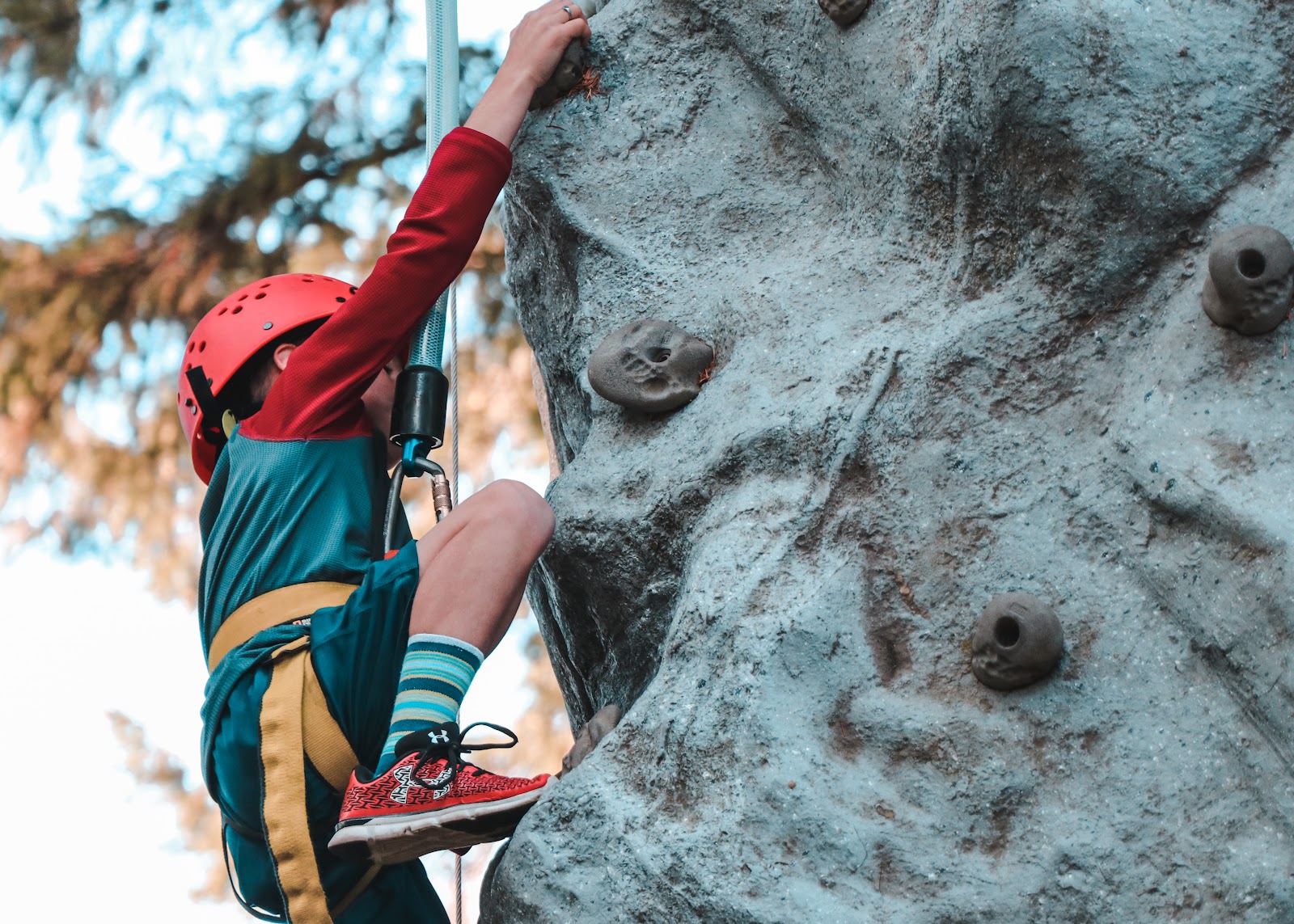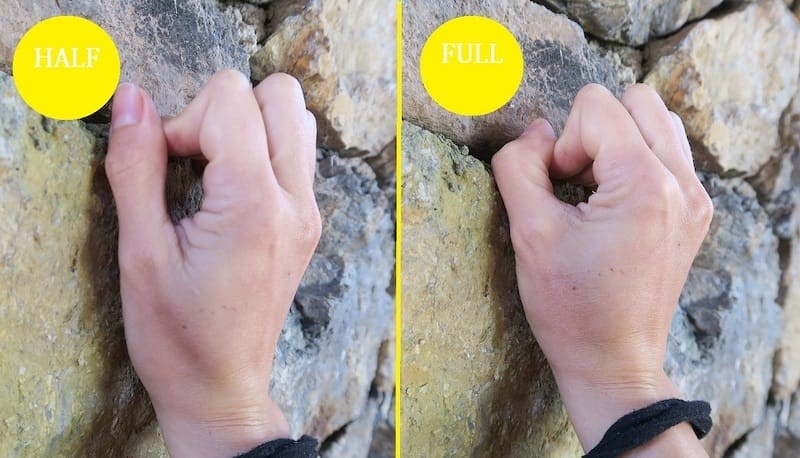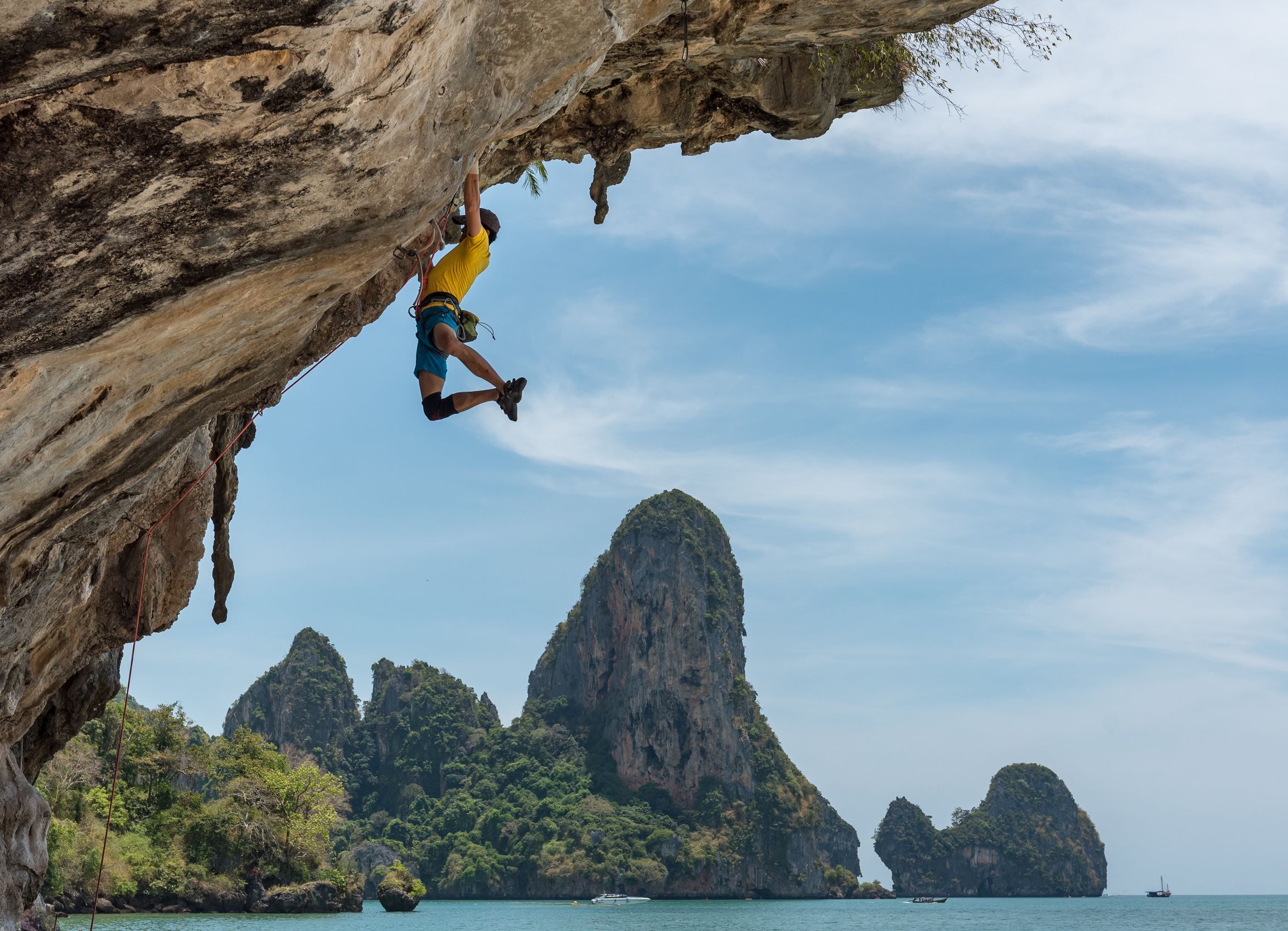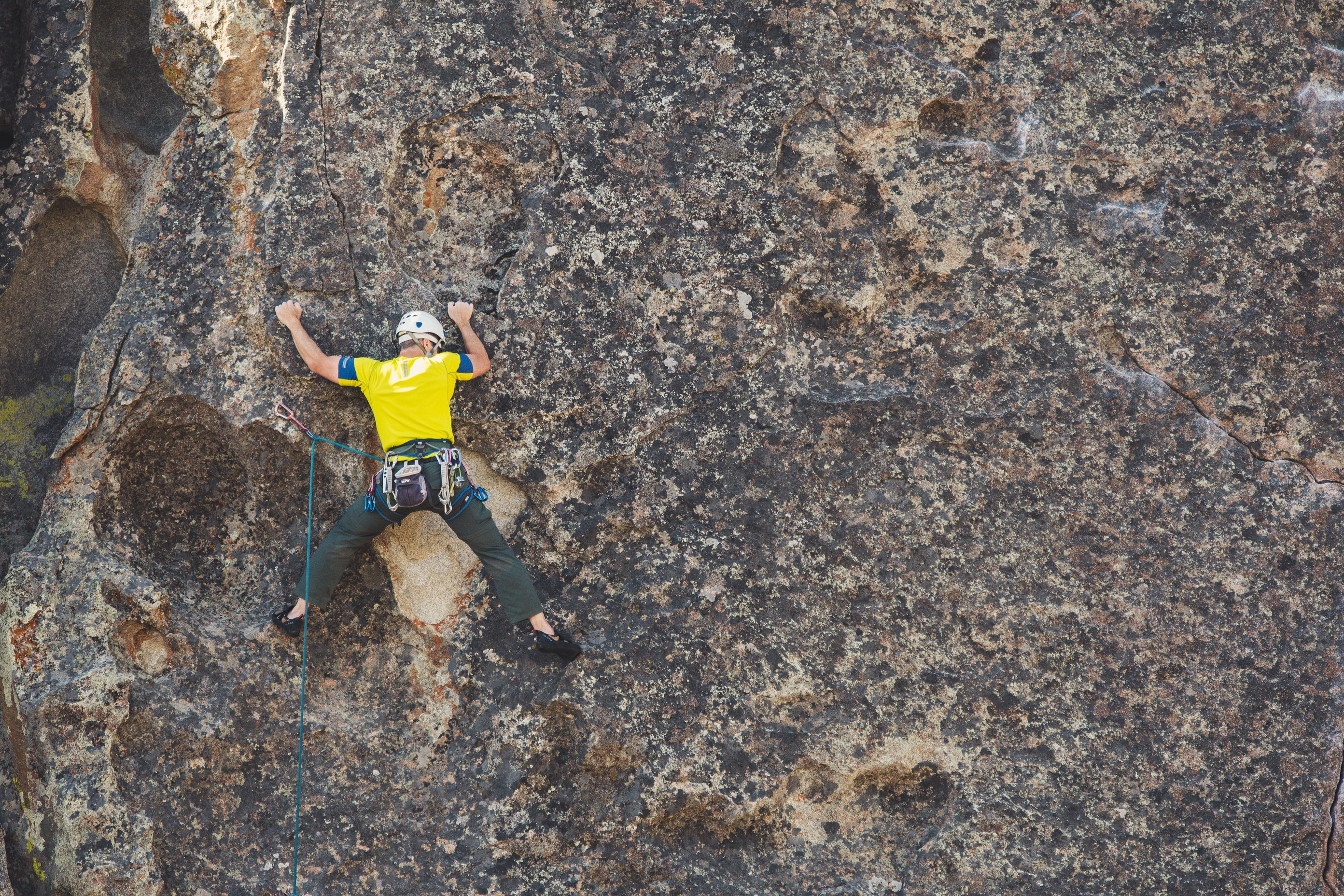This is part of our series on rock climbing holds. For a full overview, check out our guide covering all climbing holds.
Rock climbing is a great choice for those who love mountain climbing and want to enhance the thrill factor.
Knowing the best climbing-specific grip techniques will help you prevent dangerous injuries.
During rock climbing, only a few minor muscle groups in your body bear the majority of your body weight.
As a result, your climbing style and skills will dictate the type of grip that best suits you.
For those who want a challenge while climbing, the half crimp and the full crimp grips are among the most technical and demanding climbing grips.
Let’s learn more about these two grips and how you can use them for climbing.
What is Crimp Climbing?

Crimp climbing is a technique that relies mainly on the hand and finger holds.
Crimp grips are usually done on small handholds with just enough room for your fingertips. The main difference between half crimp and full crimp is the placement and use of your thumb.
Half crimp training is important if you want to learn how to use the grip properly since it can be harder to learn than full crimp. It is important to train your fingers and hands regularly if you want to be successful at crimp climbing.
There are many different exercises that you can do to build up your crimp strength.
Some people find crimp climbing to be more difficult than other types of climbing, but it really just depends on your own personal preferences and strengths.
There are many different ways to crimp climb, so you can always find a way that works best for you.
Half Crimp versus Full Crimp

Let's begin with the half crimp.
To increase your touch with the grip, you bend your middle knuckle at 90 degrees in half crimp. Strong fingers are crucial in half crimp since they're your source of hold and your means of moving your body forward.
When using half crimp as a grip technique, your thumb must remain in its natural position near your index finger. The thumb should not be exerting any force on the climbing surface.
You should use only your index, middle, ring, and pinky fingers when doing the half crimp. According to seasoned climbers, the half crimp has a lesser risk of hurting your finger joints and tendons than the full crimp grip.
On the other hand, climbing with full crimp necessitates the use of your thumb as an extra source of force while climbing.
You're grasping the climbing grips with your entire hand in full crimp, making it a popular choice with beginners.
This is also why full crimp injuries are more common than half crimp injuries. Climbers are more concerned with grip technique than adjusting body weight properly.
When to Use Half crimp vs. Full crimp

The half crimp grip is best used for climbing along surfaces with small holds and narrow edges. The full crimp is more suited for square-cut ledges with a recess for better finger traction.
Keep in mind that while either grip helps increase the power of your climb, they both pose a significant risk for hand injuries.
You should only use crimp grips sparingly when climbing.
Exercises such as wrist curls, wrist rotations, and finger extensions help reduce the risk of injury.
You may also want to include a regimen of finger stretches to properly prepare yourself for crimp climbing.
You can also use training devices such as grip donuts and crush grippers to help strengthen your fingers and wrist.
Since the half crimp grip is more difficult, half crimp training will help develop the muscles and tendons in your fingers and wrists.
How to Climb Safely with Half crimp and Full crimp Climbing Grips

It is critical to know how to be safe when using grip techniques, whether you are a first-time climber or have completed several climbs. Here are some safety recommendations for you!
1. Warm-Up.
Warming up before a climb can prepare for the challenge and can greatly reduce the risk of injury. Fingerboard warm-up will also help you avoid injuries and find the appropriate and natural position for your crimping fingers.
2. Get a Climbing Instructor.
If you are a beginner, seeking assistance from a climbing teacher or knowing someone who is a seasoned climber can assist you in developing a training program to improve your finger strength. You can also avoid developing incorrect finger and wrist placement by learning the right half crimp training exercises.
3. Pay attention.
It's vital to know how your hand and wrist should feel during practice when crimp climbing. You can lessen hand injuries by resting when needed and practicing the proper hand and finger orientation while climbing.
Conclusion
Crimp climbing is one of the most challenging climbing styles, and it can result in significant injuries.
However, learning how to properly use crimping and seeing how far you've come as a climber will make you feel satisfied.
Ultimately, you should only use the half crimp and the full crimp when you need a quick boost for speed and strength.
Repeated use of either grip is physically taxing and can lead to serious hand and wrist injuries.
Have fun conquering that next peak!





